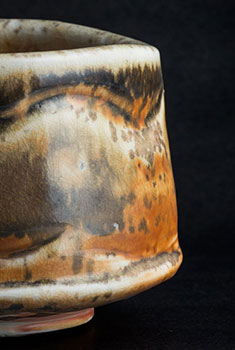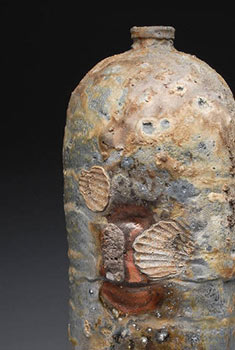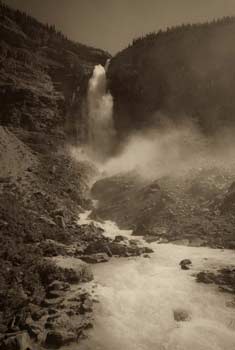- Ceramics
- Artist Pages
- Asian Ceramics & Tea
- Ceramics Artist Links
- Ceramics Links
- Ceramics Terms Glossary
- Agateware
- Banding Wheel
- Bat, Throwing Bat
- Bisqueware, Biscuit Ware
- Blistering
- Blow Up
- Boat Anchor
- Calipers
- Carbon Coring, Black Coring
- Carbon Trap
- Chuck, Chum
- Coil
- Colorants
- Crazing
- Downdraft Kiln
- EPK, Edgar Plastic Kaolin
- Electric Kiln
- Extrusion, Extruder
- Fettle, Fettling Knife
- Force Dry
- Greenware
- Kaolinite
- Kilnsitter
- Overglaze
- Pinholing
- Plucking
- Pug Mill
- Pyrometric Cones
- Raku
- Rib
- Sgraffito
- Shelf Of Shame
- Slab Roller
- Slip
- Test Tile
- Knowledge
- Frequently Ignored Answers
- Photography
- Photographers
- Photo Links
- Raw File Converters
- Camera Simulators
- Color Vision Games
- Frequently Ignored Answers
- Resources
- Contact
Movement
Using art elements to direct a viewer's eye along a path through the artwork, and/or to show movement, action and direction. Also, giving some elements the ability to be moved or move on their own, via internal or external power.
In a still picture such as a painting or photograph, where nothing is actually moving, various strategies can be used to give the viewer a sense of movement and speed, or to move the viewer's eye through the work. These include lines, diagonals and unbalanced elements; blurring; placement; direction; and motion lines and afterimages.
Lines pointing in one direction and spirals can create movement; diagonals, tilted elements, and things out of balance or unsupported will all give the feeling that movement is or is about to occur.
Fast-moving objects can be made to appear blurred, a little at the trailing edge or all over, depending on the speed and direction of motion (linear or rotational). Or, the subject may be relatively frozen in an instant while the background around it is blurred - in photography this is done by panning the camera to follow the subject while the exposure is made.
Placement can help show or frame motion. A moving subject placed in the first third of an image will have room to run. A moving subject placed in the last third may look like it's about ready to hit the edge of the image: this placement is used if distance already traveled is of interest and could be emphasized to advantage. A moving subject that has already partially or mostly left the frame can show extreme speed, and/or the moment left in the wake of its passage.
Direction can influence the perception of speed. Objects moving from left to right may have a sense of moving faster to those whose language is read from left to right (e.g. English). Likewise, objects moving down or at a downward slant can seem speedier than those moving up, as in nature it is more work and usually slower to climb.
Motion lines and afterimages can also be used to indicate motion - these techniques are common in graphic narrative works. Motion lines trail from near the back of the moving element in the direction of the path it has just traveled: the longer the lines, the more the motion and speed are emphasized. Afterimages are the remembered or left-behind glimpses of something as it moves. A subject can be depicted in several places within the same picture, showing moments along the path of its passage as well as the passage of time. The afterimages can fade as they get further away from the present subject, and may only be the outlines of the front half of the subject in various poses it has gone through in moving: they can also get farther apart as they go back in time, and closer together as they approach the current instant. Afterimages can be used in conjunction with motion lines or on their own.
Videos and animations can show actual movement. Jewelry, ceramics and other three-dimensional work can have parts that are meant to be opened or otherwise moved, creating a physical engagement between the viewer and the work, and giving the viewer something to explore and discover. Artwork that moves by itself in part or in whole, powered by natural forces (wind, tide, light, etc.) or self-propelled, and in which the motion itself is used as an artistic element, is called kinetic art (see many great examples here). Other works that change and move over time, growing, eroding or decaying, are more ephemeral in nature.
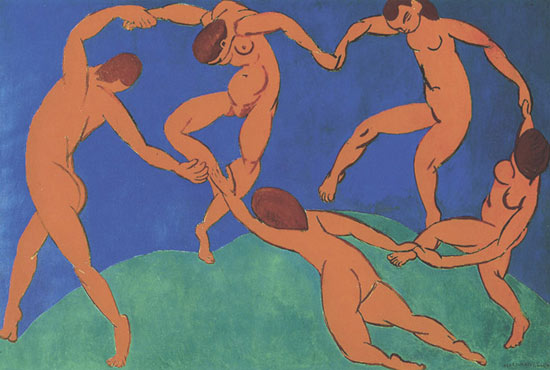
Henri Matisse - Dance (II), 1909-1910, oil on canvas, 260 x 391 cm
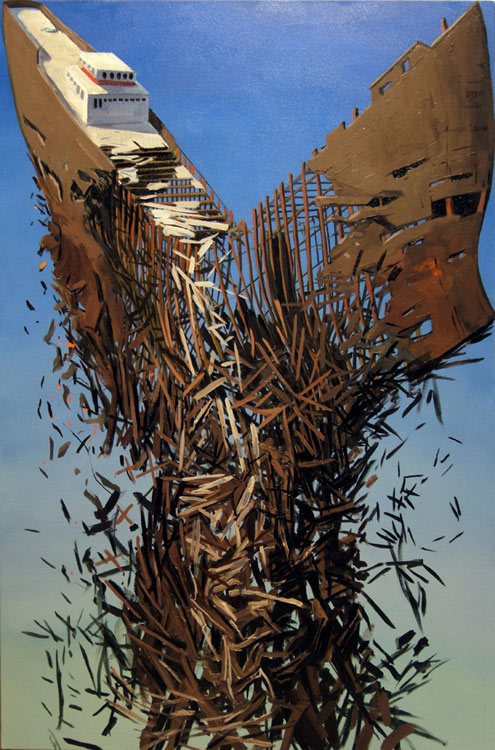
Ben Grasso - Barge, 2009, oil on canvas, 52x72 in.
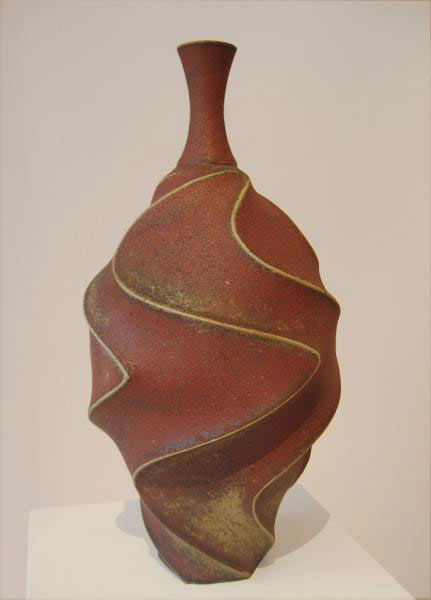
Jim Connell - Red Sandblasted Bottle, stoneware, 17.5 in.
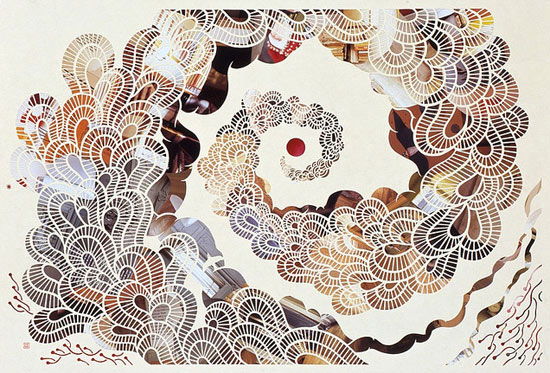
Mayuko Fujino - The Day Of The Sea (Vortex), Washi paper with collage, 76 x 56cm
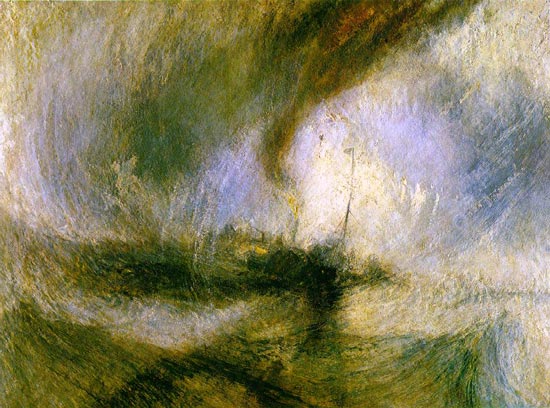
Joseph Mallord William Turner - Snowstorm, 1842, oil on canvas, 91.5 x 122 cm
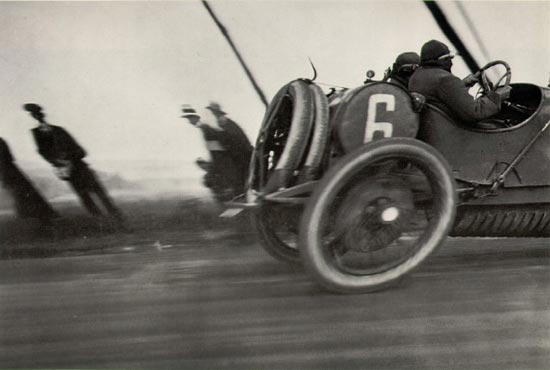
Jacques Henri Lartigue - Grand Prix de Circuit de la Seine, June 26th 1912. At least, that's what it seems to have been labelled at an exhibition at the Czartoryski Museum (link to article). Online it is also known as:
- Une Deleage au Grand Prix, 1912.
- Grand Prix de l'A.C.F., Automobile Delage, 1912
- Grand Prix de l'A.A.F., Automobile Delage, 1912 and last and perhaps best:
- Car Trip, Papa at 80 kilometers an hour, 1913. (Go Papa!)
For an cool look at what caused the image distortion, see this thread at the Large Format Photography Forum.
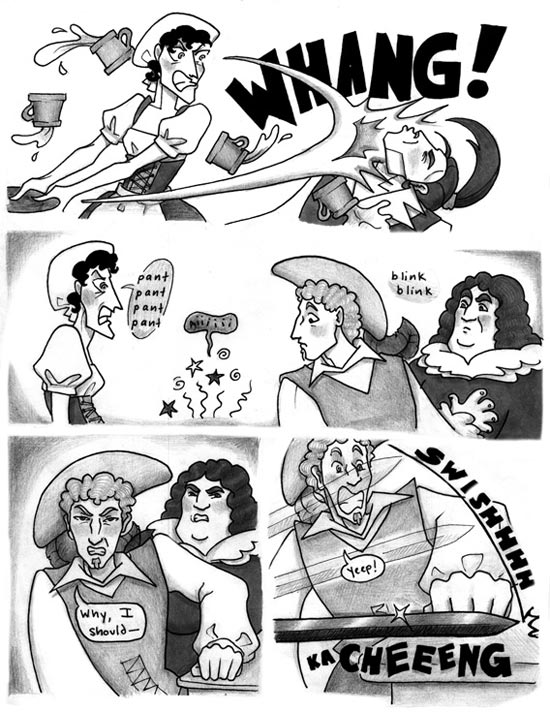
Dylan Meconis - Bite Me! pg. 5, 11/5/2008
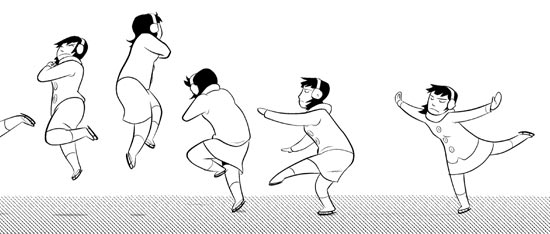
Meredith Gran - detail from Octopus Pie, #089 - lounging career, 12/28/2007
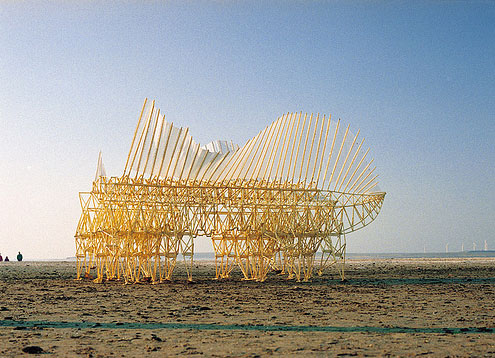
Theo Jansen - Ventosa (photo by Loek van der Klis)


